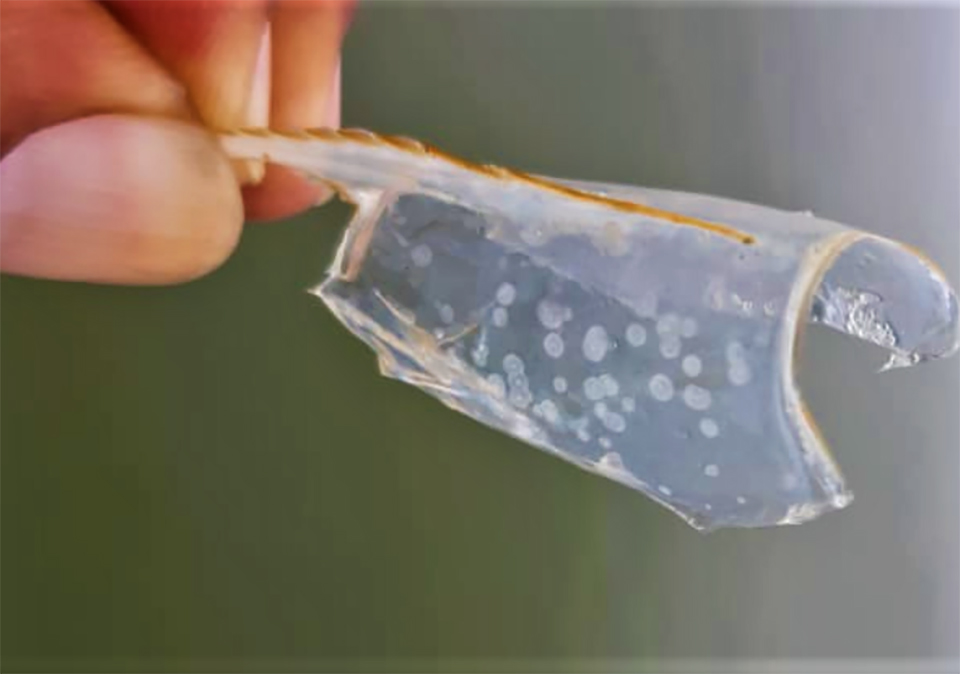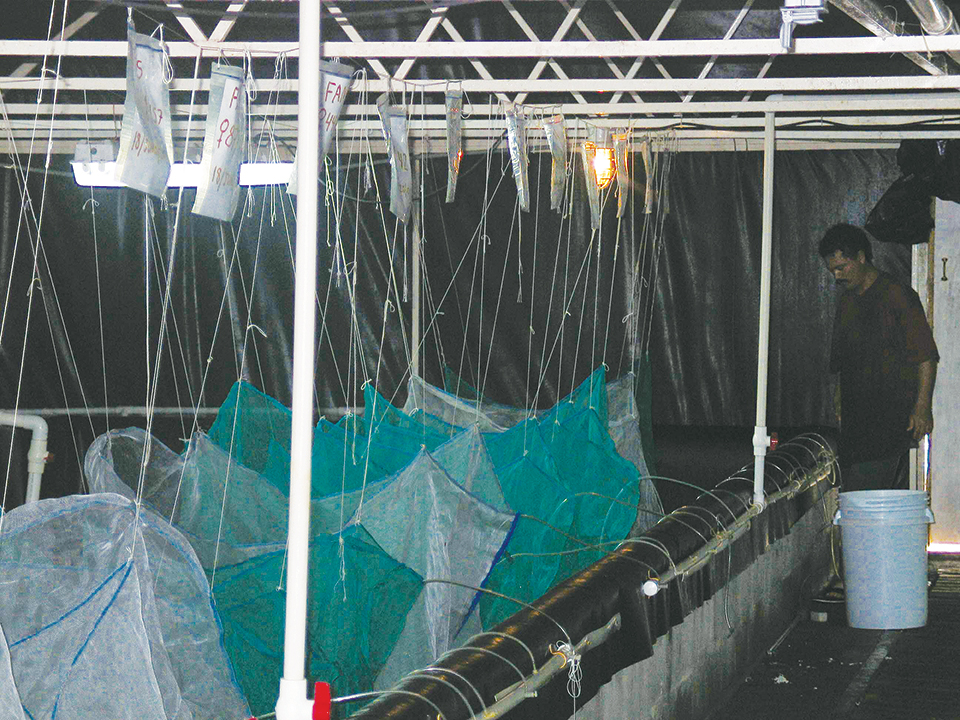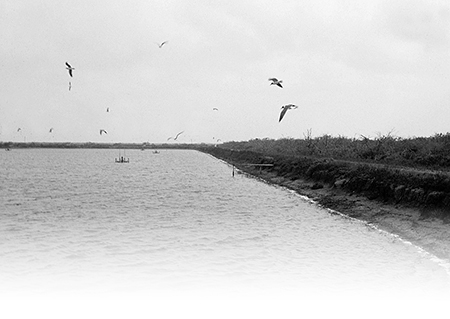Infected animals have visible abnormalities, slower growth rates

The Pacific white shrimp (Litopenaeus vannamei) has recently become very popular among shrimp farmers in Thailand as an alternative to black tiger shrimp (Penaeus monodon). Pacific white shrimp grow quickly in the first 90 days of pond culture and produce high yields, while black tiger shrimp have a slower growth rate.
The availability of high-health seed-stock from facilities that utilize specific pathogen-free broodstock is limited, and some farmers have brought in Pacific white shrimp from secondary sources in Taiwan and China that cannot guarantee their high-health status. Some have also produced larvae from broodstock raised in earthen ponds, which have a high chance of being infected by various diseases, especially Infectious Hypodermal and Hematopoietic Necrosis Virus (IHHNV). IHHNV is also found in black tiger shrimp, but does not cause major problems in the animals. It significantly reduces the growth and survival rates of Pacific white shrimp.
Thailand larvae study
The authors recently carried out a study of shrimp larvae in earthen ponds at a commercial shrimp farm in Nakorn Pathom Province, Thailand. Larvae produced from broodstock infected with IHHNV (based on results of a polymerase chain reaction test) were raised in two 1,600-square-meter experimental ponds at a stocking density of 44 animals per square meter.
The results were compared with shrimp larvae from imported specific pathogen-free (SPF) broodstock raised in two control ponds at a stocking density of 75 animals per square meter. The salinity in all ponds ranged 3 to 6 ppt. The shrimp were fed with commercial pelleted feed following standard procedures.

Results
After 30 days, some of the IHHNV-infected shrimp began to show abnormalities like bent or deformed rostrums, wrinkled walking legs, cuticular roughness, and other deformities. Most of these shrimp were also smaller than others in the same pond.
As time passed, the number of shrimp with abnormalities in the experimental ponds rose continuously. Those in the IHHNV-infected ponds that did not display clinical abnormalities also grew at a slower rate than the shrimp from SPF broodstocks. The difference was quite apparent after 70 days.
When the shrimp in the two IHHNV-infected ponds were harvested after 120 days, the average yield was 1,882 kilograms per hectare, average survival rate was only 44.17 percent, and the feed-conversion rate (FCR) was 1.75. The shrimp from SPF broodstock were harvested after 100 days. Their average yield was 7,719 kilograms per hectare, survival rate was 81.99 percent, and the FCR was 1.35. There were statistically significant differences between the growth rates and survival rates of the two groups (p < 0.05).
Histopathological studies of the shrimp that displayed clinical signs revealed Cowdry type A and intranuclear inclusion bodies in the cells of the ectodermal tissues (gills, epidermis, and nerve cord) as well as the mesodermal tissues (hematopoietic organ, antennal gland, and lymphoid organ). The shrimp that came from SPF broodstock did not have visible abnormalities.
Conclusion
As confirmed in a small pond study in Thailand, stocking Pacific white shrimp seedstock infected with IHHNV negatively affects production. For higher yields, shrimp farmers should use postlarvae from broodstock that test negative for IHHNV in polymerase chain reaction tests.
(Editor’s Note: This article was originally published in the February 2004 print edition of the Global Aquaculture Advocate.)
Now that you've reached the end of the article ...
… please consider supporting GSA’s mission to advance responsible seafood practices through education, advocacy and third-party assurances. The Advocate aims to document the evolution of responsible seafood practices and share the expansive knowledge of our vast network of contributors.
By becoming a Global Seafood Alliance member, you’re ensuring that all of the pre-competitive work we do through member benefits, resources and events can continue. Individual membership costs just $50 a year.
Not a GSA member? Join us.
Authors
-
Jiraporn Singhapan
Department of Fishery Biology
Faculty of Fisheries
Kasetsart University
Chatuchak, Bangkok, Thailand[104,116,46,99,97,46,117,107,64,99,116,110,115,105,102,102]
-
Chalor Limsuwan
Department of Fishery Biology
Faculty of Fisheries
Kasetsart University
Chatuchak, Bangkok, Thailand[104,116,46,99,97,46,117,107,64,99,116,110,115,105,102,102]
-
Niti Chuchird
Department of Fishery Biology
Faculty of Fisheries
Kasetsart University
Chatuchak, Bangkok, Thailand[104,116,46,99,97,46,117,107,64,99,116,110,115,105,102,102]
Related Posts

Health & Welfare
Estimating heritability of WSSV resistance in Pacific white shrimp
A study in Vietnam showed that there was significant variation in WSSV resistance among Pacific white shrimp families evaluated.

Health & Welfare
Emerging disease: Shrimp Hemocyte Iridescent Virus (SHIV)
SHIV is a new Pacific white shrimp virus in the Iridoviridae family. Authors also developed an ISH assay and a nested PCR method for its specific detection.

Health & Welfare
Testing may help increase IHHNV tolerance in Pacific white shrimp
The authors conducted a study to investigate the prevalence of IHHNV in P. vannamei within the context of a family-based genetic selection program.

Health & Welfare
Sea birds pose threat as vectors of penaeid shrimp pathogens
Sea birds can spread viral, bacterial, fungal and protozoan diseases to shrimp farms, so future farm designs should take their presence into account.


